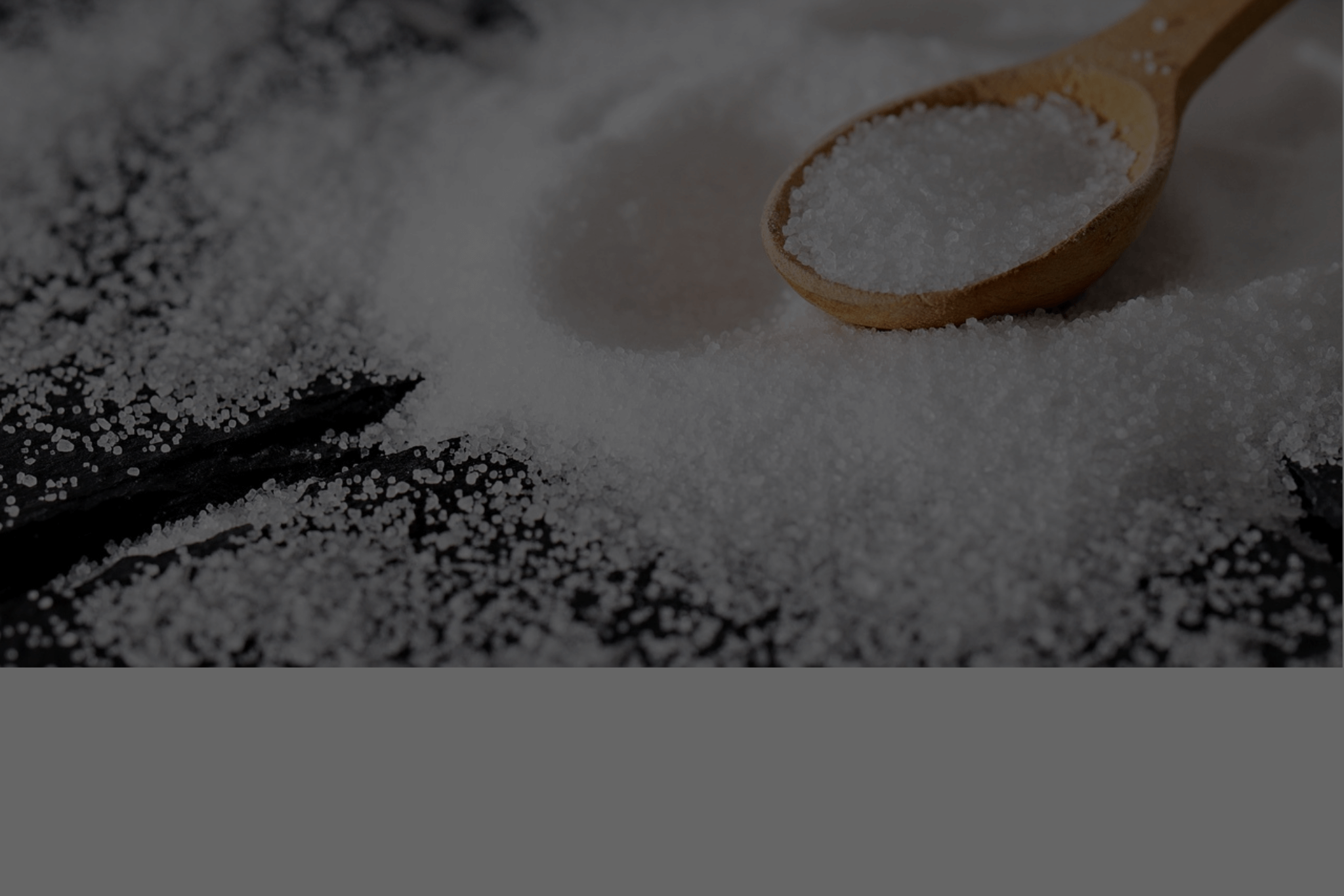
Processed foods are responsible for at least 25% of salt intake by the Brazilian population
Salt is added to processed food for different reasons, such as, season the food and let it with a flavor that pleases the consumers taste, inhibit the multiplication of microorganisms, to improve the processes such as for example, leavening bakery products or emulsification of meat products. Even though, statistics demonstrate that most industrialized food does not have salt added.
Check the data on sodium content of industrialized food to learn more:
- The studies conducted by Ital, about the content of sodium stated on the label of various industrialized food, demonstrate that, g, the quantities of sodium vary significantly, and there are products with very reduced contents
- The trend for reducing do the quantity of sodium consumption.
- ABIA and Ministry of Health: agreement signed to reduce sodium.
- Corporate initiatives for the reduction of sodium in the products
Bread
In 2019, Ital and ABIMAPI conducted a study about nutrients and ingredients of 70 products marketed in Brazil, obtained the following results. The bread preparation uses salt as an important agent in the leavening and generation of the characteristic flavor of a bread. The quantity of salt used varies a lot among different brands and different types, whether made at factories, in bakeries or in homes. ALL the industrialized white loaves of bread have a LOWER quantity of SODIUM than the average quantity of French bread. ALL the industrialized whole loaves of bread have a LOWER quantity of SODIUM than the average quantity of whole homemade bread.
Cookies
In 2020, Ital and ABIMAPI conducted a study about nutrients and ingredients of 243 products marketed in Brazil, obtaining the following results. Products with low SODIUM were not identified, which is natural considering that they are products that use salt in its basic formulation. The cookies preparation uses salt as an important agent in the leavening and generation of the characteristic flavor. The quantity of salt used varies a lot among different brands and different types, whether made at factories, in bakeries or in homes.
Cakes
In 2021, Ital and ABIMAPI conducted a study about nutrients and ingredients of 210 products marketed in Brazil, obtained the following results. Cakes use salt as a supporting ingredient. The quantity of sodium used varies a lot among different brands and different types. The quantities of sodium has already been much higher, but there was an adequacy by manufacturers, following agreements from associations such as Ministry of Health and Anvisa, alternatives to chemical yeast, where most of them sodium-based. Use of potassium-base yeast. These actions help reducing the sodium present. In the Ital study, various products were identified with low sodium content.
Doughs
In 2021, Ital and ABIMAPI conducted a study about nutrients and ingredients of 269 products marketed in Brazil, obtaining the following results. Generally, salt is a basic ingredient to make doughs, their fillings and seasonings. However, the quantities of SODIUM the doughs vary significantly according to the ingredients present in their formulation. Among the alternatives to reduce sodium, there are the smallest addition of salt in the dough, use of substitute ingredients, etc.
Pizzas
In 2020, Ital and ABIA conducted a study about nutrients and ingredients of 56 products marketed in Brazil, obtaining the following results. The quantity of SODIUM in pizzas varies significantly according to the ingredients present in its formulation, average, it is not possible to generalize. According to the Anvisa Normative Instruction IN no. 75, from October 8th, in its Annex XV that defines the limits for the statement on the front nutritional label, they shall state as “HIGH CONTENT OF SODIUM” food that contain more than 600 mg/100 g or more, that shall lead the manufacturers that have products above the limit to adequate to it. The products above the limit shall follow the market trend, which is to reduce the sodium content.
Yogurt
In 2020, Ital and Viva Lácteos conducted a study about nutrients and ingredients of 150 products marketed in Brazil, obtaining the following results. Among the 150 brands researched, only one has SALT included in the ingredients list. The quantities of sodium present in yogurts are low (in the analyzed sample: average value of 72.4 mg and highest value of 126.0 mg). Most analyzed product can be considered as low content of SODIUM and, even in the other products, the quantities of sodium are not so relevant based on the daily intake recommendations of 2,400 mg.
Plant-based beverages
in 2022, Ital and Good Food Institute conducted a study about nutrients and ingredients of 178 products marketed in Brazil, obtained the following results. The quantities quantities of SODIUM vary significantly among the analyzed products. In the total sample, 17 beverages (9.6%) present up to 0 mg; 76 products (42.7%) up to 40 mg, a content considered as VERY LOW; 139 products (78.1%) up to 80 mg, content considered as LOW, per portion of 200 ml. Every beverages contain SODIUM in quantities lower than 300 mg/100 ml. The highest quantity of SODIUM observed is of a soybean-based beverage with approximately 170 mg/100 ml. FRUIT-based beverages (57.1%) and OILSEED-based beverages (60.9%) are those who have the higher number of products with up to 40 mg/200 ml.
juice and other non-carbonated beverages
In 2020, Ital and ABIR conducted a study about nutrients and ingredients of 217 products marketed in Brazil, obtained the following results. Generally, juices, nectars, refreshments and liquid food do not have relevant quantities SODIUM. In the TOTAL of the sample (217 products), 46.5% (101 products) inform zero content of SODIUM, while the remaining ones have a content lower than 80 mg/200 ml, considered as VERY LOW content according to the legislation (maximum 40 mg of sodium per 100 ml of product). The low quantities of sodium present are very low (in the analyzed sample: average value of 9.7 mg/200 ml and the highest value of 5 mg/200 ml).
Ice cream
In 2021, Ital and ABIS conducted a study about nutrients and ingredients of 180 products marketed in Brazil, obtained the following results. The quantities of SODIUM in ice creams vary significantly according to the ingredients present in their formulation. According to the Anvisa Normative Instruction IN no. 75, from October 8th, 2020, 176 products (97.8% of the sample) can be considered as LOW SODIUM, and 109 products (60.6% of the sample) can be considered as VERY LOW SODIUM, per portion of 60 g. Among the 150 brands researched, only one has SALT included in the ingredients list. The quantities of sodium present in yogurts are low (in the samples analyzed: average value 72.4 mg and a higher value of 126.0 mg).
Hamburgers
in 2021, Ital and ABIA conducted a study about nutrients and ingredients of 90 products marketed in Brazil, obtaining the following results. The quantity of SODIUM in hamburgers varies significantly according to the ingredients present in its formulation, it is not possible to generalize. In average, in portions of 80 g, MEAT products have 362 mg of SODIUM (18.0% of VDR); the product with the highest content has 1106 mg (55.3% of VDR) and the product with the lowest content has 40 mg (2.0% of VDR). In average, in portions of 80 g, PLANT-BASED products have 372 mg of SODIUM (18.6% of VDR); the product with the highest content has 776 mg (38.8% of VDR) and the product with the lowest content has 123 mg (6.1% of VDR). Many seasoned hamburgers use salt because it is a basic ingredient in preparation of ready-to-eat meat, but there are brands that let the consumer to add salt during preparation.
Chocolates
In 2022, Ital and ABICAB conducted a study about nutrients and ingredients of 483 products marketed in Brazil, obtained the following results. The quantity of SODIUM in chocolates varies a lot among the different types of products, there are several products with no or low sodium content. Dark/semi sweet chocolates usually have very low quantities of sodium. For example, among the dark/semi sweet chocolate, 44.4% present 0.0 mg and 51.7% have up to 40 mg in each 50 g.
Hamburgers
in 2022, Ital and ABICAB conducted a study about nutrients and ingredients of 416 products marketed in Brazil, obtaining the following results. The quantities quantities of SODIUM vary significantly among the analyzed products, both for salty as sweet. In the total sample, 147 products (35.3%) have values up to 5 mg; 223 products (53.6%) up to 40 mg, a content considered as VERY LOW; 280 products (67.3%) up to 80 mg, content considered as LOW, per portion of 50 g.
Peanut
In 2022, Ital and ABICAB conducted a study about nutrients and ingredients of 416 products marketed in Brazil, obtained the following results. The quantities quantities of SODIUM vary significantly among the analyzed products, both for salty as sweet. In the total sample, 147 products (35.3%) have values up to 5 mg; 223 products (53.6%) up to 40 mg, a content considered as VERY LOW; 280 products (67.3%) up to 80 mg, content considered as LOW, per portion of 50 g.



